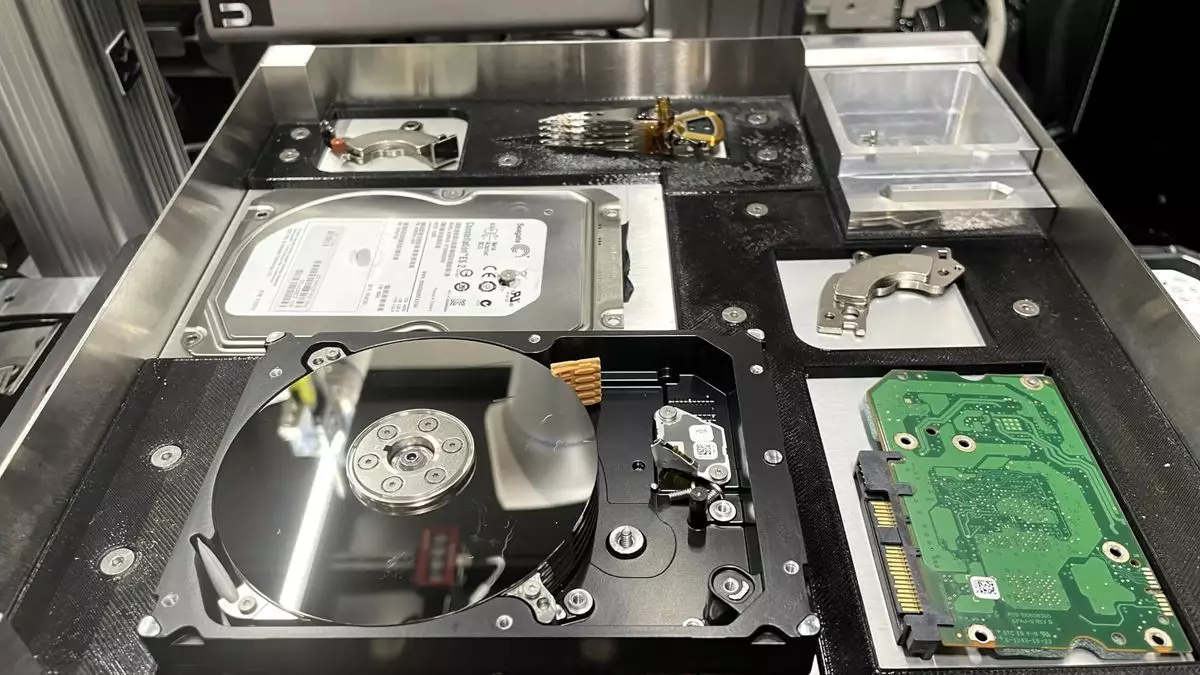As technology continues to advance, so does the issue of electronic waste (e-waste). Estimated at a staggering 50 million metric tons annually, e-waste presents a significant environmental challenge globally. Among the myriad of electronic components heading to landfills, defunct hard drives form a sizable segment, contributing notably to this growing crisis. The common practice traditionally involves shredding these drives to protect sensitive data, but such measures often result in valuable materials being lost forever in the waste stream. Innovative solutions are necessary to turn this looming problem into proactive sustainability efforts.
Microsoft’s Vision for E-Waste Recycling
Recognizing the inefficiency of traditional disposal methods, Microsoft is spearheading efforts to transform hard drive recycling. The company’s principal data scientist, Ranganathan Srikanth, has put forth an ambitious project during the 2022 Microsoft Global Hackathon, aimed at achieving a 90% reuse and recycling rate of hard disks by 2025. By leveraging robots and artificial intelligence (AI), Microsoft’s initiative hopes to streamline the disassembly of hard drives, enabling efficient and sustainable recycling practices on a scale previously unimaginable.
Despite advancements in technology, the magnitude of hard drives slated for recycling each year—between 20 to 70 million—is overwhelming. The bulk of these hard drives are typically ground into shreds, with recycling being minimal at best. Against this backdrop, Srikanth’s proposal emerges as a beacon of hope, one that could potentially reshape the approach to e-waste management in the tech industry.
At the core of Microsoft’s strategy is the integration of robots equipped with machine learning capabilities that are programmed to dismantle hard drives meticulously. The goal is to extract valuable components systematically while minimizing waste. This includes precious materials like neodymium magnets, which are often lost in traditional shredding processes. While the platters may still need to be shredded to ensure data security, the remainder of the drive—including metals and circuit boards—can be recovered and repurposed.
However, developing machines that can accurately identify and separate components poses significant hurdles. Hard drives may bear similar physical dimensions, yet identifying individual parts, such as screws and casing, requires complex AI training and meticulous programming. The challenge lies not just in the disassembly but in ensuring that these machines can adapt to various manufacturers and designs within the vast market of hard drives.
Microsoft’s current progress represents just the beginning of what could become an extensive application of robotics to not only hard drive disposal but potentially to entire computers as well. While disassembling laptops or desktops is undeniably more intricate, the value embedded in their materials is immense. Components from CPUs, motherboards, and other electronic elements can significantly contribute to recycling efforts, creating a circular economy that mitigates the need for raw material extraction from the Earth.
However, it’s essential to approach the solution with caution. The hype surrounding AI and robotics often leads to inflated expectations about readiness at an industrial scale. Despite promising results from preliminary implementations, comprehensive solutions require robust testing. The insights gained from continued research into robotics and AI are invaluable, serving not only the environment but also advancing technology itself.
The intersection of technology and sustainability has never been more critical. The innovative approach championed by Microsoft exemplifies how leveraging robotics and AI can offer an effective means to tackle the burgeoning issue of e-waste. As the world grapples with the environmental impacts of technology, initiatives that prioritize recycling and responsible disposal offer a glimmer of hope. Embracing strategies that utilize robots for disassembly and material recovery could not only alleviate the e-waste crisis but also serve as a model for other industries to follow in the quest for sustainability. These advancements highlight a shift towards responsible consumption and a future where technology serves not just industry but the planet as well.

